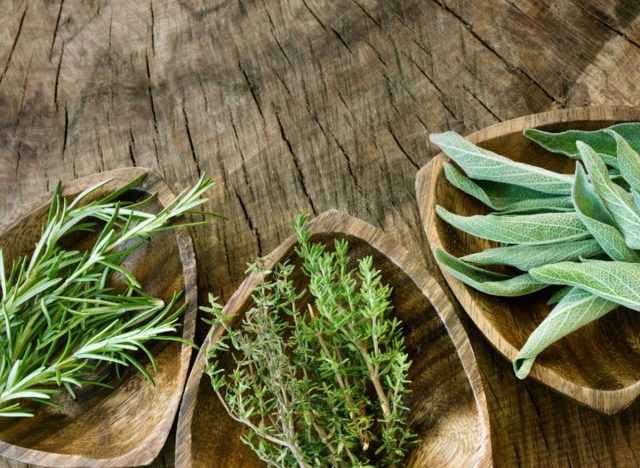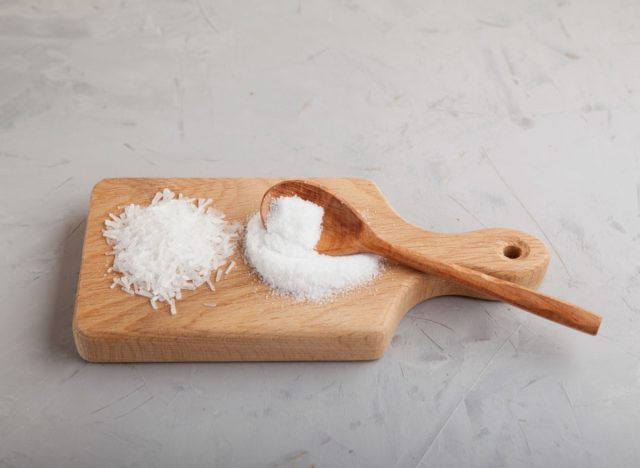Whether you’re in the process of making plans for a major community-centric eating holiday like Thanksgiving or Christmas or you’re simply eager to gather a large group of your nearest and dearest together for dinner just because, you know that when the prospect of making a whole turkey finds its way into your dinner party menu considerations, it’s time to get down to business in the kitchen. When a large event is on the agenda and you commit to commemorating the occasion by making a beautiful bird, you really only have two options: Go big and impress with a perfectly cooked, well-seasoned, moist turkey, or watch in awkward horror as your guests politely skirt around their plated portions of food that you just invested a ton of time planning and preparing.
Sure, a roast turkey is capable of supplying an abundance of naturally delicious flavorings on its own—but why settle for basic, bland bites when you can enhance and elevate your turkey’s natural zest with the right balance of seasonings able to make your meal even more sumptuous? If cooking an entire turkey, establishing the right combination of seasonings to best complement the taste of your tender turkey plus the other side dishes you plan to serve can make or break your whole meal. While some seasonings might seem as crucial as they are obvious, like salt, other seasoning combinations might not be on the radar of a novice turkey cook.
As the head chef of your home kitchen, what you choose to season your turkey with is ultimately up to your own personal preference, of course—but sometimes, it’s helpful to have a few suggestions on how to navigate this ambitious dish from the pros. With that in mind, we spoke to a few chefs to get their advice on the top turkey seasoning combinations that are sure to leave your guests happy, full, and impressed. Here are some of the best turkey seasonings that are sure to knock your socks off, according to professional chefs. And for more chef-endorsed tips on how to make a mouth-watering turkey, also be sure to check out Here’s How Long You Actually Need to Cook Your Turkey, Say Chefs.
Rosemary, sage, and thyme


When coming up with a seasoning blend for your turkey dinner, sometimes it’s easiest to play it safe with a traditional combination of seasonings, like rosemary, sage, and thyme.
“These herbs are ‘traditional’ for a reason; they add a delicious depth of flavor to the turkey,” says Raymond Neil, a seasoned professional chef and expert consultant for TD Kitchen. “When seasoning your turkey, be sure to generously rub the seasoning blend all over the outside of the bird,” he advises.
In addition to using a seasoning blend of rosemary, sage, and thyme on your turkey, Neil also claims that the inclusion of salt is essential in any seasoning mix, as this spice helps to bring out the natural flavors of your meat.
Salt, pepper, garlic powder, and granulated sugar
When cooking a savory main dish like a whole turkey, including a sweetener like sugar into your seasoning mix might not be something you’d expect to see in the recipe. But it actually enhances the dish by tenderizing it, and helps the meat brown while it’s cooking in the oven. For savory flavor notes, add in some salt and pepper—which are the two basic ingredients that show up in almost every turkey seasoning blend—as well as garlic powder.
“The salt and pepper bring out the flavor,” says Milo Cruz, a Philippines-based former head chef who has since become the CMO of Legend Cookware. “The sugar acts as a tenderizer and helps with browning, while the garlic adds a subtle perfume that won’t overpower anything else you might want to throw in.”
Cruz recommends using four parts salt, three parts granulated sugar, two parts garlic powder, and one part pepper—making it relatively easy to work out how much of each ingredient to put into the spice blend.
“To use this blend with turkey, simply apply it as a dry rub and let it sit in the fridge at least overnight—up to a maximum of 24 hours,” he advises.
READ RELATED: Costco's $1.50 Hot Dog and Soda Combo Has Some Stiff New Competition
Smoked paprika, chipotle powder, thyme, sage, and citrus zest
If your holiday turkey is seasoned the same way year after year, it must get pretty boring. However, you can literally spice things up this year, with a seasoning blend that’s filled with lots of flavor: Smoked paprika and chipotle powder bring the heat, while the zest from lemon, orange, lime, or even grapefruit add the right touch of acidity into the dish.
“I believe food should almost be like a musical experience when it comes to building the flavors,” says Lawrence Acosta, the executive chef of Ámbar Restaurante in the Plaza Hotel Pioneer Park in El Paso, Texas. “You start off with deep and dark flavors like a bassline in a song—in this case, the chipotle powder and smoked paprika. Then, build up the experience with a nice rhythm of the fresh herbs to continue the music. Finally, the citrus will help cut through the fattiness and brighten the bite up, to bring the whole song of flavors together.”
Acosta also suggests using a brine made of tequila two days before cooking. He claims that this will help season the interior of the turkey meat as well as tenderize it, so you’re left with a flavorful, juicy turkey.
Nutmeg, rosemary, sage, and salt
When preparing a whole turkey in anticipation of a mainstream fall or winter holiday, such as Thanksgiving or Christmas, why not spice up your bird with a spice mix evoking common flavor notes of the season? If looking for flavor combinations to complement your pumpkin pie or sweet potato casserole, seasoning your turkey with a mix of nutmeg, rosemary, sage, and salt is a great balance of flavors that captures the essence of the holiday season in every bite.
“Dried herbs tend to work well because they don’t burn in the oven the way fresh herbs might,” says Yankel Polak, an in-house chef and video producer at ButcherBox. “The salt helps introduce the herbs into the turkey, maximizing flavor as the turkey heats up.”
Salt and MSG


Out of the five flavor profiles—salt, sweet, bitter, sour, and umami—umami may be the most perplexing. Ultimately, it’s just the savory flavor found in different foods, and the flavor profile is most commonly found in foods like mushrooms, meat, seafood and some cheeses. While it’s found in a lot of food items, home chefs might find it tricky to create an umami flavor in their dishes. However, Christopher Koetke, a corporate executive chef at Ajinomoto Health & Nutrition North America, Inc., says that the easiest—and often most flavorful—way to create umami flavors and effectively incorporate them into a turkey dinner is to season your bird with a combination of salt and MSG.
“Most home chefs usually use salt, but combining salt with MSG brings out an umami flavor,” Koetke says. “This stimulates two sets of taste receptors for salty and umami, which makes for a more balanced flavor profile. Umami from MSG becomes the base note that can build on with other flavors for a delicious Thanksgiving turkey.”
Source:









